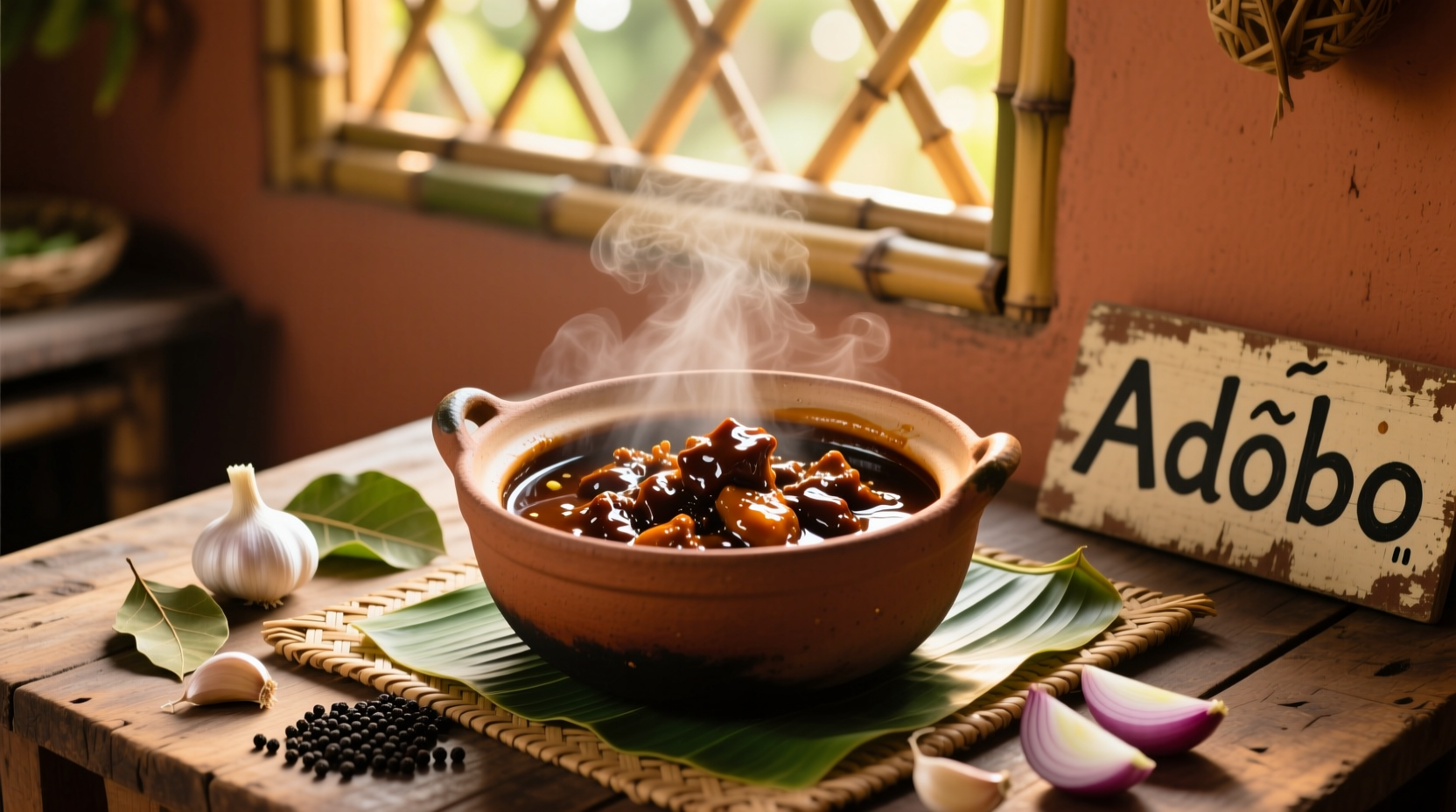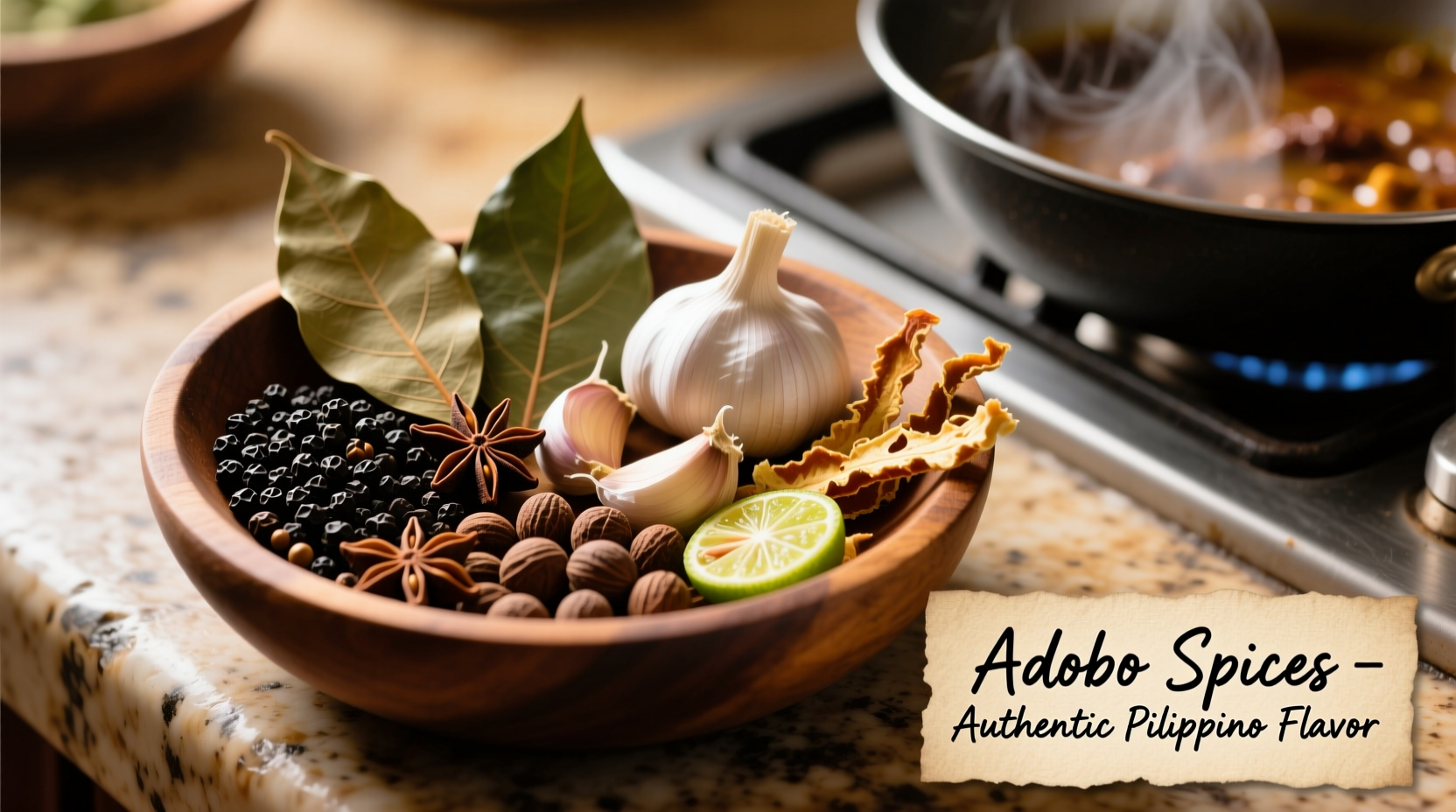Adobo isn't a single spice but a cooking technique with two distinct traditions: Filipino adobo uses garlic, bay leaves, black peppercorns, and vinegar as its core, while Mexican adobo features ancho chilies, cumin, oregano, and cloves in a rich paste. Understanding these differences ensures authentic flavor in your cooking.
When you search for what spices are in adobo, you're likely trying to recreate that distinctive tangy, savory flavor you've tasted. But here's the crucial detail many miss: there are two completely different adobo traditions—Filipino and Mexican—that use entirely different spice profiles. Confusing them leads to disappointing results. Let's clarify exactly what goes into each authentic version so you can cook with confidence.
Adobo Fundamentals: Technique vs. Seasoning
Before listing spices, it's essential to understand that "adobo" refers to both a cooking method and a seasoning blend, depending on the cultural context. This dual meaning causes significant confusion for home cooks. The Filipino version is primarily a vinegar-based cooking technique, while the Mexican variant is a complex chili-based paste.
| Adobo Type | Core Purpose | Essential Liquid Base | Primary Spices |
|---|---|---|---|
| Filipino | Cooking technique | Vinegar | Garlic, black peppercorns, bay leaves |
| Mexican | Seasoning paste | Tomato-chili broth | Ancho chilies, cumin, Mexican oregano, cloves |
The Filipino Adobo Spice Profile
Contrary to popular belief, Filipino adobo isn't about a pre-mixed spice blend. It's a cooking method where meat (typically chicken or pork) simmers in a vinegar-soy sauce mixture. The "spices" are actually aromatics added during cooking:
- Garlic - Always used fresh, crushed or minced (4-6 cloves per pound of meat)
- Bay leaves - Typically 1-2 dried leaves per pot, preferably California bay for authentic flavor
- Whole black peppercorns - Never pre-ground; 1-2 teaspoons adds subtle heat
According to the National Historical Commission of the Philippines, this simple spice trio emerged from pre-colonial preservation techniques where vinegar and salt were primary preservatives. The Spanish colonial period (1565-1898) introduced garlic and black pepper, creating the adobo we recognize today. Historical records show vinegar-based cooking predates Spanish influence, with early Filipinos using nipa palm vinegar.

Mexican Adobo: The Complex Chili Paste
Mexican adobo (sometimes called adobado) is fundamentally different—a rich, brick-red paste used as both marinade and cooking sauce. Its spice profile is significantly more complex:
- Ancho chilies - The foundation (6-8 dried chilies per batch), providing mild heat and raisin-like sweetness
- Cumin - Ground cumin (1-2 tablespoons), essential for earthy depth
- Mexican oregano - Different from Mediterranean oregano, with citrus notes (1 tablespoon)
- Cloves - Just 3-4 whole cloves add distinctive warmth
- Guajillo chilies - Often blended with ancho for color and tang (2-3 chilies)
The evolution of Mexican adobo reflects centuries of culinary fusion. As documented by Mexico's National Institute of Anthropology and History, the technique originated with indigenous preservation methods using chili and salt. Spanish colonists introduced vinegar and Old World spices like cumin and cloves, creating the adobo paste tradition that spread from central Mexico to the American Southwest.
Common Misconceptions and Regional Variations
Many commercial "adobo seasoning" products create confusion by blending elements from both traditions. Authentic preparation requires understanding regional differences:
Filipino Regional Variations
- Visayas region: Adds coconut milk for richer texture
- Bicol region: Incorporates small amounts of shrimp paste (bagoong)
- Luzon highlands: Uses native dahon ng laurier (a local bay leaf variety)
Mexican Regional Variations
- Oaxaca: Includes hoja santa leaf for herbal complexity
- Puebla: Adds a touch of chocolate for depth
- Northern Mexico: Uses more chipotle for smokiness
Creating Authentic Adobo at Home: Practical Guide
Whether you're making Filipino or Mexican adobo, these professional techniques ensure authentic results:
Filipino Adobo Success Tips
- Never substitute rice vinegar - Use cane vinegar (sukang iloko) or coconut vinegar for authentic tang
- Add soy sauce after cooking - Traditional versions add it late to preserve color and prevent burning
- Simmer, don't boil - Gentle cooking for 45 minutes develops flavor without toughening meat
Mexican Adobo Paste Preparation
- Toast dried chilies - Briefly in dry skillet until fragrant but not burnt
- Remove chili seeds - For controlled heat level (seeds contain most capsaicin)
- Blend with warm broth - Creates smoother paste than cold liquid
- Strain for silky texture - Traditional method uses fine mesh sieve
When Authenticity Matters: Context Boundaries
Understanding which spices are essential versus optional depends on your cooking context:
- Traditional Filipino adobo - Garlic, peppercorns, and bay leaves are non-negotiable; other ingredients are regional variations
- Mexican adobo paste - Ancho chilies, cumin, and oregano form the irreducible core; other elements are regional adaptations
- Modern fusion cooking - Feel free to experiment, but understand you're creating something new, not traditional adobo
Professional chefs at the Culinary Institute of America note that substituting key spices fundamentally changes the dish's cultural identity. Their regional cuisine guidelines emphasize respecting traditional spice profiles when attempting authentic preparations.
Storage and Usage Recommendations
Proper handling preserves adobo's complex flavors:
- Filipino adobo - Best cooked fresh; leftovers develop stronger vinegar flavor over time
- Mexican adobo paste - Stores well for 2 weeks refrigerated or 3 months frozen in ice cube trays
- Dry spice mixes - Commercial "adobo seasoning" loses potency after 6 months; make small batches
Frequently Asked Questions
Is adobo seasoning the same as adobo sauce?
No. Adobo seasoning typically refers to a dry spice mix (common in Filipino cooking), while adobo sauce is a wet chili-based paste (Mexican tradition). Confusing these leads to incorrect recipes.
Can I substitute paprika for ancho chilies in Mexican adobo?
Not for authentic flavor. Ancho chilies provide unique raisin-like sweetness that paprika lacks. For closest substitute, use a blend of sweet paprika and a small amount of raisin paste.
Why does my Filipino adobo taste too vinegary?
Traditional Filipino adobo balances vinegar with soy sauce. Reduce vinegar by 25% initially, then adjust after cooking. Authentic versions use specific vinegars like cane or coconut vinegar, not harsh distilled varieties.
Are bay leaves essential in Filipino adobo?
Yes, they're fundamental to authentic Filipino adobo. California bay leaves provide the distinctive herbal note. Omitting them creates a different dish entirely. Dried laurel leaves are the only acceptable substitute.
What's the difference between Mexican oregano and regular oregano?
Mexican oregano (Lippia graveolens) has citrusy, earthy notes and is stronger than Mediterranean oregano (Origanum vulgare). Substituting regular oregano creates noticeably different flavor. Use 50% less Mediterranean oregano if substituting.











 浙公网安备
33010002000092号
浙公网安备
33010002000092号 浙B2-20120091-4
浙B2-20120091-4